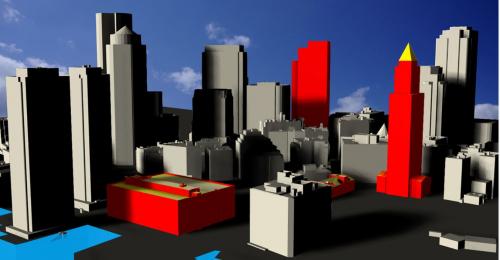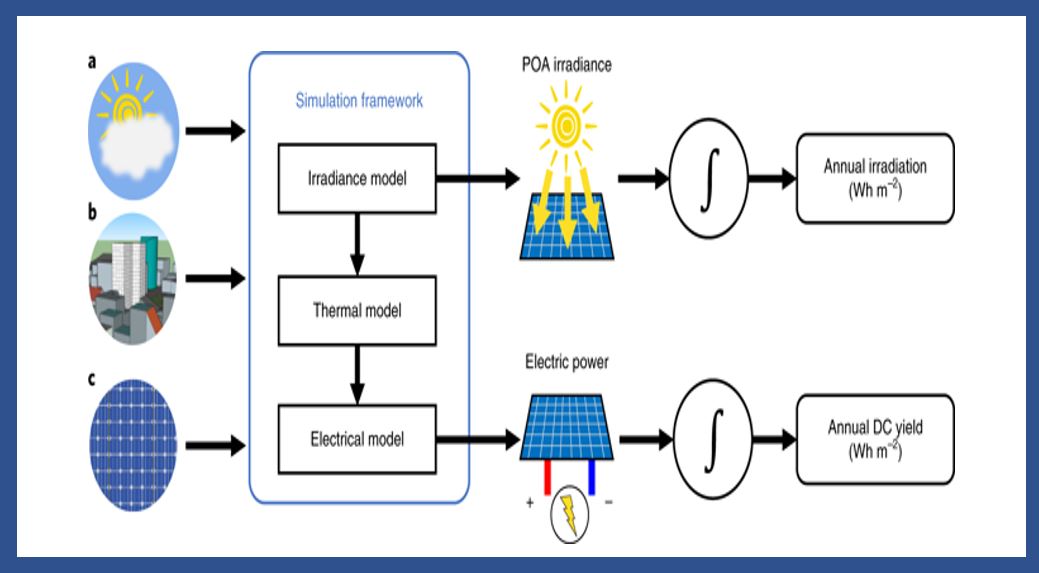
A team of researchers has developed a fast way to calculate the solar energy potential of surfaces in an urban environment. Their new approach is also accurate. They say their approach can help urban planners and architects incorporate photovoltaic technology in their designs. Photovoltaic (PV) means relating to electricity generation using light, i.e., solar energy.
The researchers wrote about their work in the journal Nature Energy (citation below). The authors were Andrés Calcabrini, Hesan Ziar, Olindo Isabella, and Miro Zeman. They are all from the Delft University of Technology in the Netherlands.
Shade from trees, buildings, and other structures in urban areas affect the performance of PV systems significantly. Accurate assessments of the performance of PV systems and their costs vs. benefits facilitate their integration in the urban environment.
Many tools can simulate the energy yield of PV systems. However, determining how much energy a PV system generates in an urban environment is not easy. When researchers have to factor in the dynamic shading of objects caused by the annual movement of the Sun, the computational demands on current simulations are extremely high.
Simplifying the calculation in an urban environment
The authors say their new approach simplifies the calculation. It enables the user to assess the solar power potential for large urban areas rapidly. Apart from being fast, the new approach is also accurate.
The researchers based their approach on a correlation between the annual irradiation received at a specific urban spot and a skyline profile.
This latest study demonstrated that the amount of solar irradiation a specific surface receives annually can be quantified using two parameters:
- The Sun coverage factor.
- The sky view factor.
The two parameters are derived from the skyline profile.
We use the sky view factor to estimate the irradiation from the diffuse sunlight component. The Sun coverage indicates how much irradiation comes from direct sunlight.
Approach reduces computational complexity
These two parameters reduce the computational complexity of the problem significantly, the authors wrote. They added that their study demonstrated this.
Andrés Calcabrini, a PhD student at Delft’s Department of Electrical Sustainable Energy, developed the new approach. He was under the supervision of Prof. Miro Zeman and Dr. Olindo Isabella.
According to a Delft press release:
“The Photovoltaic Materials and Devices (PVMD) group has already integrated the approach in a software toolbox that can accurately calculate the energy yield of PV systems at any location.”
Regarding their new approach for calculating energy potential in an urban environment, PVMD group leader, Olindo Isabella, said:
“Our fast approach integrated in software tools for calculating the solar energy potential can significantly facilitate design and distribution of buildings with integrated PV systems in urban planning frameworks.”
“It will also help investors to take decisions on integrating PV systems in buildings and other urban locations.”
What is solar energy?
Solar energy involves capturing the Sun’s energy (sunlight) and converting it into electricity. Both terms – solar energy and solar power – have the same meaning.
Solar energy is renewable energy. In other words, it is energy whose source never runs out, i.e., it lasts forever. ‘Forever,’ in this context, refers to a human timescale rather than a geological timescale.
Citation
“A simplified skyline-based method for estimating the annual solar energy potential in urban environments,” Andres Calcabrini, Hesan Ziar, Olindo Isabella, and Miro Zeman. Nature Energy. DOI: https://doi.org/10.1038/s41560-018-0318-6.

